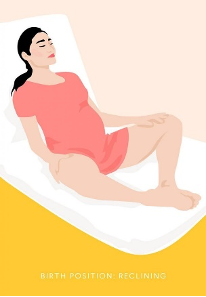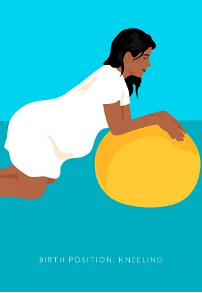Push Prep and Physiotherapy – Birth prep for expecting mamas
You may be surprised to hear that physiotherapy has a role to play in your preparation for birth. The pelvic floor undergoes immense strain during birth, yet we don’t view pelvic floor injuries like we do a hamstring or bicep strain. Your typical musculoskeletal injuries can receive extensive rehabilitation dependent on the degree of the injury. Unfortunately, many women go through their postpartum recovery never knowing their is rehabilitation that is specific to their birth injuries.
Pre-rehabilitation (“prehab”) has existed in athletics for a number of years. There is now evidence for “prehab” for those undergoing hip or knee joint replacements, where they receive physiotherapy prior to their surgery to improve their functional outcomes post-op. What if we provided expecting mamas “prehab” for their pelvic floors? What if women had a repertoire of strategies to help them manage their labour and birth experiences, giving them more knowledge and autonomy. Well that’s what we’re hoping to share with you today. So, let’s get started!
Positioning & Perineal Injuries

As physiotherapists, our job is to provide you the tools and strategies to help you better manage your symptoms in a particular circumstance. In this case, pelvic health physiotherapists can teach expecting mamas different positions that not only allow them to have a variety of positions to choose from, but also use gravity to their advantage. These positions takes pressure off the tailbone and allows the birth canal or pelvis to further expand. Positions such as squatting with a birth bar or stool, being on all 4’s, and side-lying, are all considered positions that take pressure off the tailbone (see below).
However, labour is an exhausting and taxing activity on the body. This may lead to mamas feeling more comfortable in a reclined position. In these cases, we can still show you strategies that allow you to open the birth canal.



Pushing Technique
How many of you have been told or have heard of the saying “hold your breath and bear down like you’re having a bowel movement?” This can be an effective cue for women you have no connection or experience with their pelvic floor. But since you’re reading this, I am sure you are interested in becoming more connected to yours. The SOGC Clinical Practice Guidelines tell us that expecting mamas should use the pushing strategy that is most comfortable for them and start pushing when they feels the urge to push. But, like before, if women are only familiar with one strategy, their options are limited.
There are two main types of pushing techniques that are discussed in the research, directed pushing or spontaneous pushing. Directed pushing is the process of taking a deep breath and holding it while bearing down for a period of time as directed by your healthcare provider. You may be told to hold your breath between 4-6s. Holding your breath for 10s or longer can have less favourable newborn and maternal outcomes. Once you are 10cm dilated, you may be directed to start pushing. Spontaneous pushing refers to the pushing technique that is triggered by a women’s natural reflexes when the baby descends into the birth canal. With this technique mamas push when they feel the urge to push, and push three to five times per contraction, taking several breaths in between. This allows pushing to be more effective and less fatiguing. However, this type of pushing is based on optimal obstetric conditions where they baby has descended far enough into the birth canal to elicit those reflexes.
As pelvic health physiotherapist, we understand the interaction between your breathe and its effect on pelvic floor muscle activation and relaxation. We can help expecting mamas understand different breathing strategies that can help them effectively engage their core for pushing without being overly exhausted.
Perineal Massage
Ah, the dreaded vaginal massage that may reduce your risk of an episiotomy. Unfortunately, there has been some misconceptions regarding the idea of this exercise. Its purpose is not to “stretch out” your perineum, but rather improve your tolerance to withstand tissue stretch. You see, like any muscle in the body, when we experience too much stretch, our muscles will naturally want to contract through built-in reflexes. This is especially the case when you experience pain. Many expecting mamas, without knowledge of their pelvic floor, go into their birth experience with a tense pelvic floor. During labour and birth, those intense bouts of pain can promote further tension of your pelvic floor. This can hinder the descent of baby’s head into the birth canal and potentially require an episiotomy and/or use of forceps or a vacuum to help birth your baby.
How can physiotherapy help with this? We can help you relax and release your pelvic floor and perineal area and help you manage your symptoms with pushing. By no means does this remove pain or tearing from your birth experience, but it can help you better manage it and reduce your risk of having an episiotomy. Also, research shows that you can start doing these exercises as late as 35 weeks of pregnancy.
Pain Management
Birth is arguably one of the most painful experiences one can go through. There are pharmacological options and non-pharmacological options available to women to manage their pain. However, many women choose to undergo a natural birth. This choice is yours and should be discussed with your midwife or OBGYN as a part of your birth plan. We do not want women choosing a natural birth because societal or familial pressures. One of the things I discuss frequently with my patients is the difference between pain and suffering. Women should not be suffering through their birth experience and its important to understand this.
There are a variety of techniques and strategies that we can teach expecting mamas to help them manage and cope with their pain levels based on pain science research. These strategies include relaxation and distraction techniques, positioning, breathing, and movement. You may have heard of Lamaze? Lamaze is a very specific form of breathing for labour, but there are so many ways to breathe and relax your body. The goal is to give you as many tools as possible to achieve this for your labour and birth.
If this is something you’re wanting to know more about, we are offering a 2-hour Push-Prep Appointments through Physiotherapy for all expecting mamas and their partners to learn these techniques to prepare for birth!.
Hopefully this provided you some insight into how pelvic health physiotherapy can help expecting mamas with their birth preparation. Don’t be shy to reach out! We’re always happy to answer questions.
Grecia
Grecia Alaniz PT, MScPT
